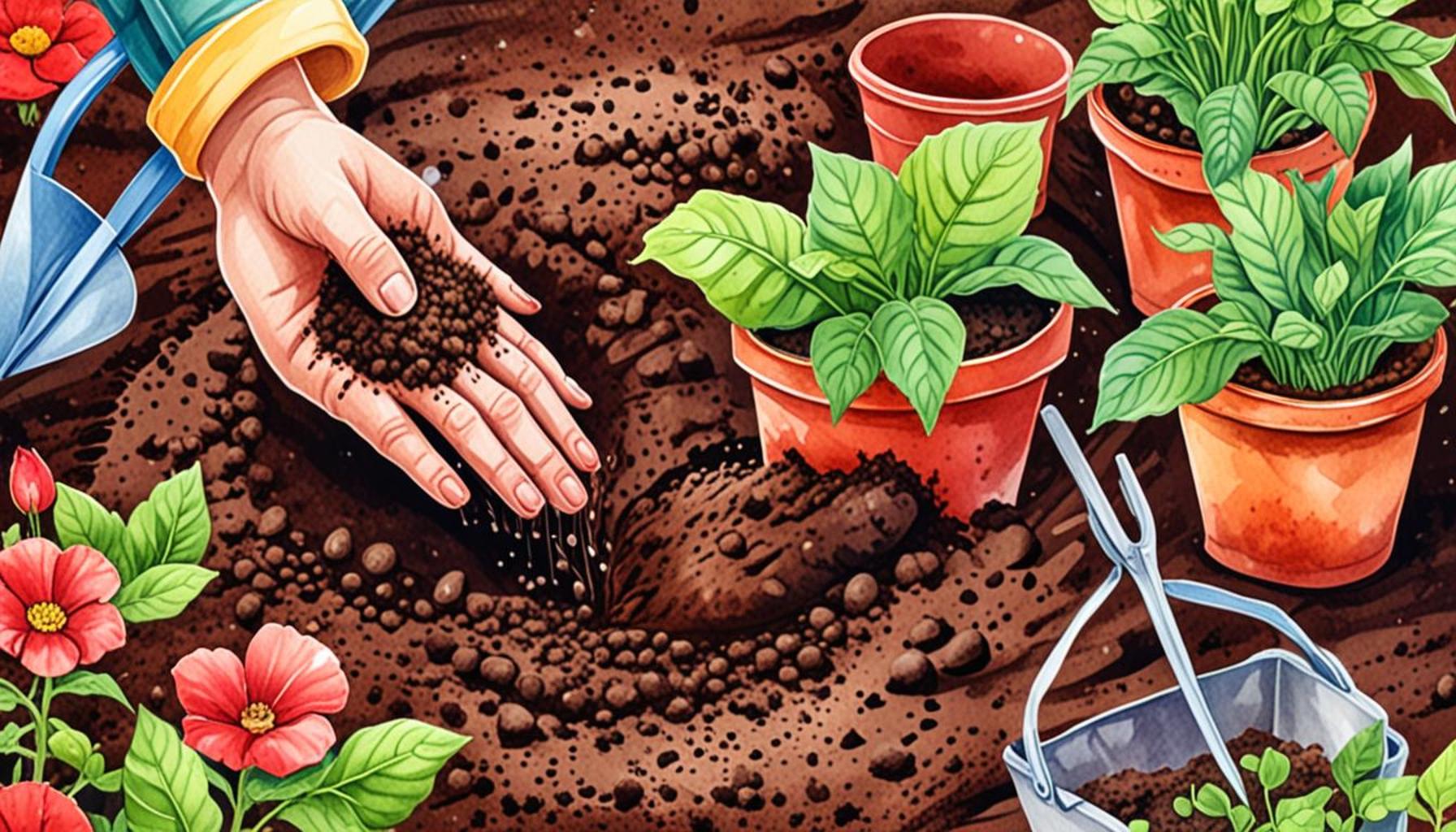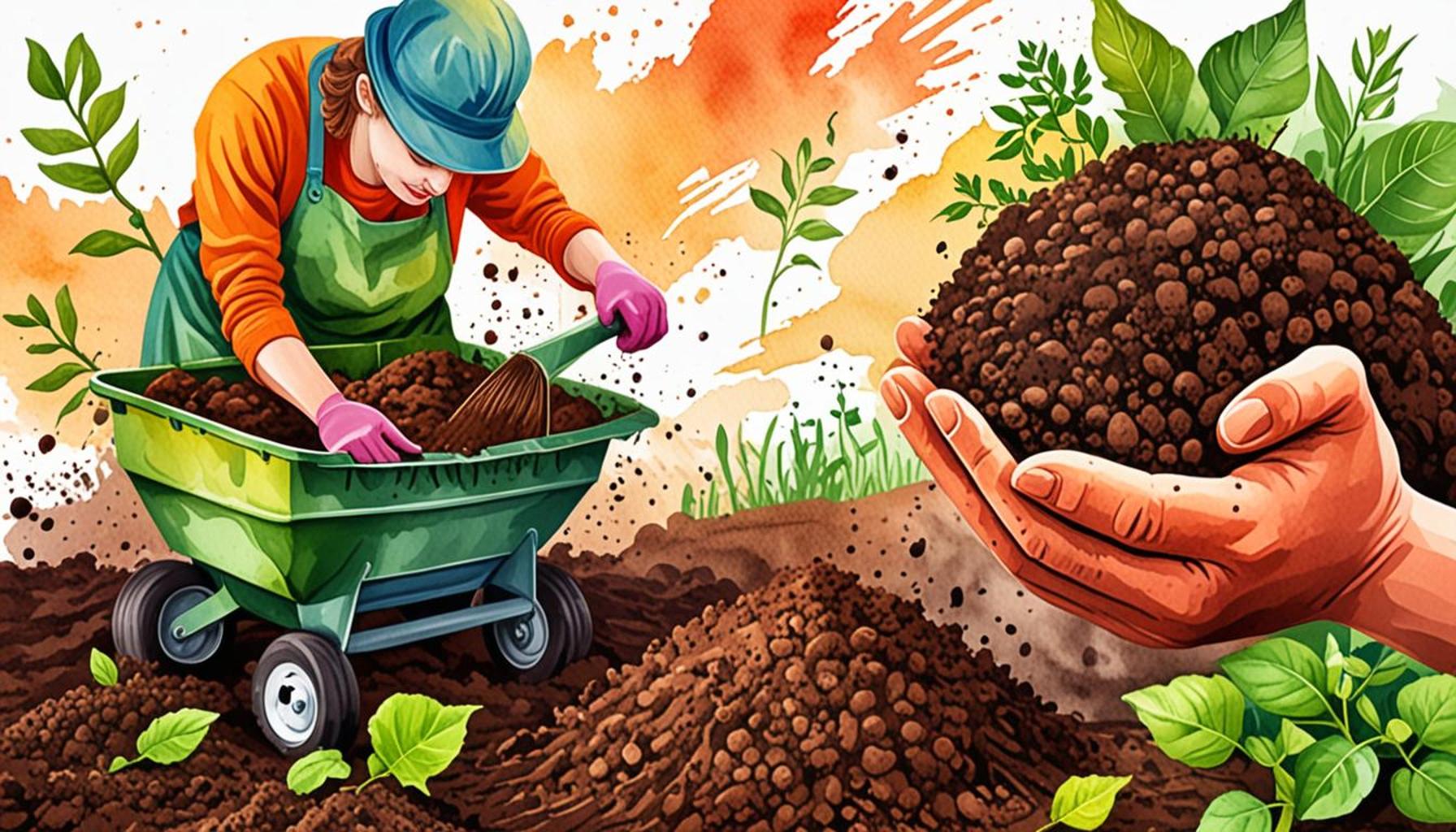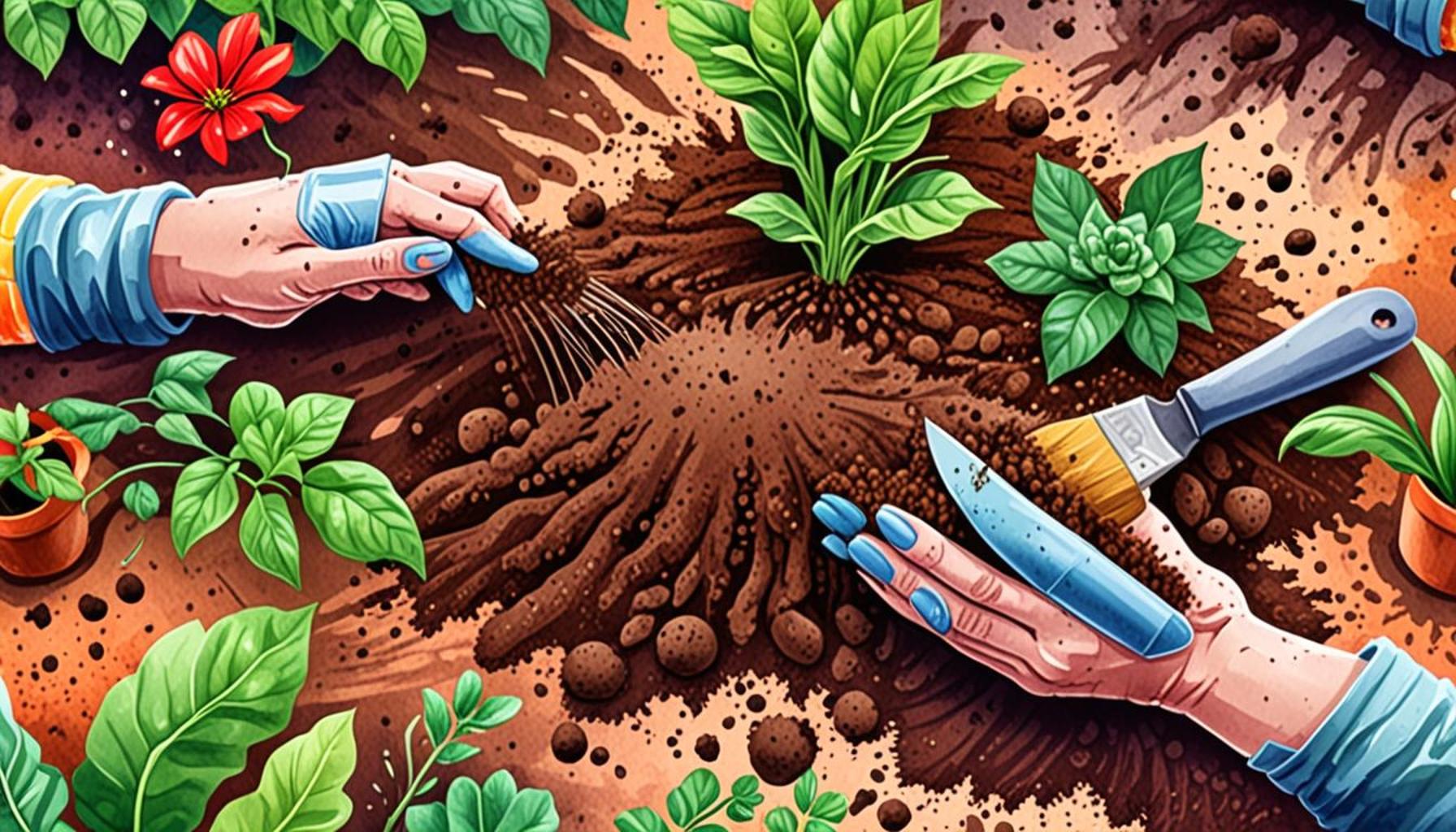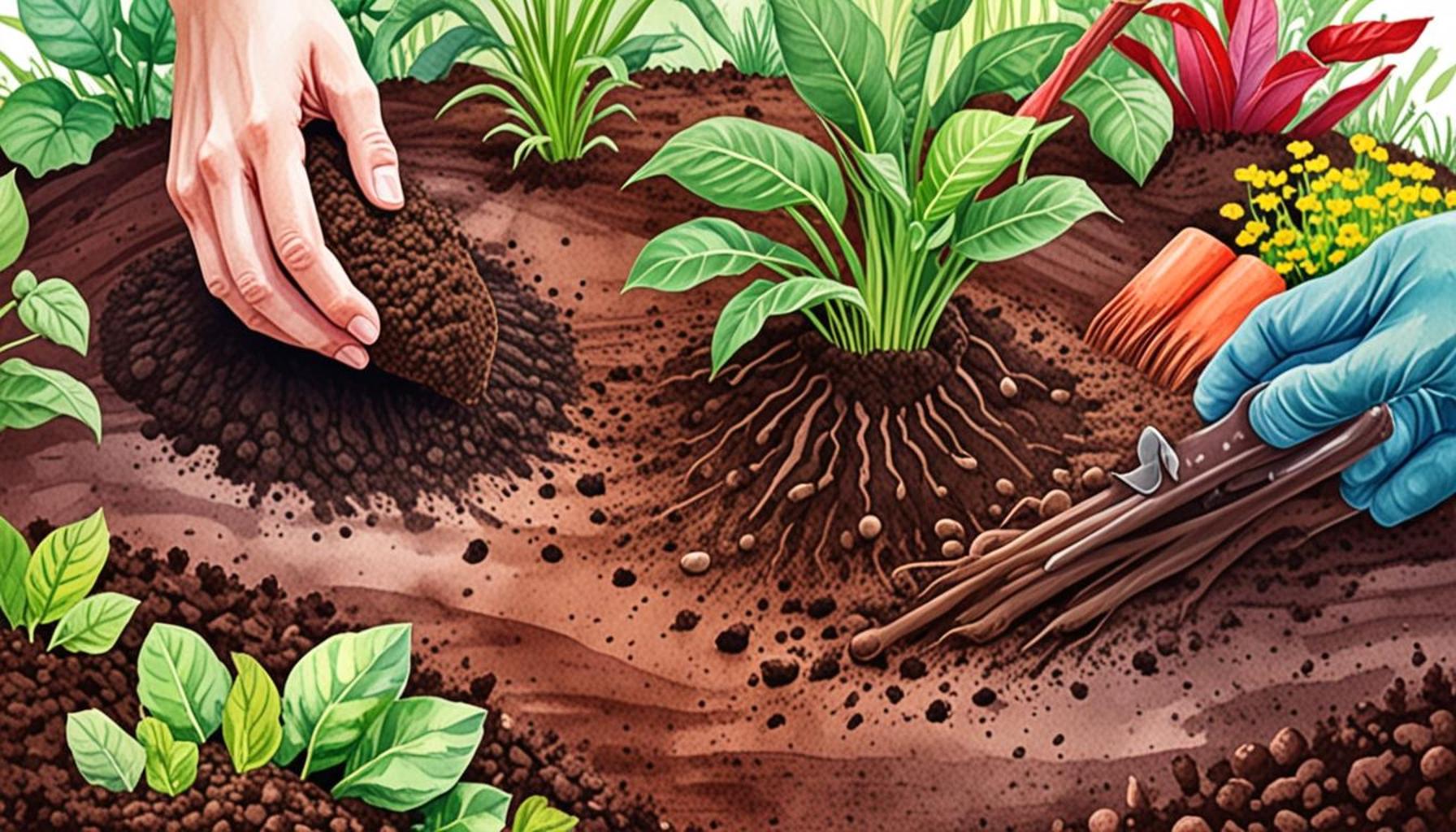The Importance of Soil Preparation for Beginner Gardeners

Understanding Soil Preparation
Soil preparation is a fundamental aspect of gardening that is often perceived as a mundane task, yet it serves as the backbone for a flourishing garden. The success of your gardening efforts hinges on the quality of your soil, making its preparation not just advantageous, but vital. Before you plant your seeds or seedlings, taking the time to examine your soil’s composition can greatly affect the health and productivity of your plants.
Why Soil Matters
The role of soil in gardening extends far beyond simply being a growing medium. Good soil offers numerous benefits that contribute to a garden’s overall vitality:
- Nutrients: Healthy soil is a reservoir of organic matter, which provides essential nutrients needed for plant growth. For instance, micronutrients like iron, manganese, and zinc are often crucial for plant health, promoting better yields.
- Water Retention: Well-prepared soil enhances its ability to retain moisture, thereby reducing water runoff and ensuring that your plants receive the hydration they need. This is especially important in regions with unpredictable rainfall, where maintaining soil moisture can be a gardening challenge.
- Root Development: Loamy soil, characterized by a balanced mixture of sand, silt, and clay, promotes vigorous root systems. This type of soil allows plants to access more nutrients and increases their resilience against drought and other stressors.
Essential Steps for Soil Preparation
For novice gardeners, understanding the essential steps of soil preparation can create a strong foundation for their gardening endeavors. Here are some key steps to follow:
- Testing the Soil: Begin by conducting a soil test. Various kits are available at garden centers, providing valuable insights into pH levels and nutrient content. For example, most vegetables thrive in neutral to slightly acidic soil with a pH between 6.0 and 7.0. Testing helps you determine what amendments might be necessary to optimize your soil.
- Tilling: Tilling involves loosening the soil to enhance aeration and drainage. This can be done using a rototiller or by hand with a garden fork. Proper tilling breaks up compacted soil, allowing roots to grow freely. However, care should be taken not to over-till, as this can destroy soil structure.
- Adding Amendments: Enrich your soil by incorporating organic materials such as compost, aged manure, or peat moss. These amendments not only provide nutrients but also improve soil structure and increase moisture retention. As an example, adding a 2-3 inch layer of compost can substantially boost the soil’s fertility and microbiome.
Ultimately, grasping and applying effective soil preparation techniques will pave the way for a successful and rewarding gardening experience. As you further immerse yourself in your gardening journey, you will uncover just how critical soil health is to nurturing vibrant and productive plants. This foundational knowledge lays the groundwork for advances in your gardening practices and leads to beautifully flourishing gardens that can be a source of pride and sustenance.
DIVE DEEPER: Click here to learn more about harvesting techniques
The Foundation of a Thriving Garden
As any seasoned gardener will attest, the path to a prosperous garden begins before the first seed is sown. Soil preparation serves as the foundation upon which successful gardening is built. For beginner gardeners, understanding the intricacies of soil preparation can mean the difference between lush greenery and a landscape of disappointment. When you take the time to prepare your soil adequately, you are essentially setting the stage for your plants to thrive.
Components of Healthy Soil
At the heart of soil preparation lies the understanding of what constitutes healthy soil. This involves a combination of physical, chemical, and biological properties that together create an ecosystem capable of supporting plant life. Here are some critical components:
- Soil Texture: The texture of soil refers to the relative proportions of sand, silt, and clay. Sandy soils drain quickly but may lack nutrients, while clay soils retain moisture but can become compact and restrict root growth. Striking a balance is key, and aiming for loamy soil, which is rich in all three textures, can promote optimal plant growth.
- Organic Matter: Soils that are rich in organic matter, such as decomposed leaves, plant materials, and compost, are more fertile and better at holding moisture. Adding organic matter is akin to providing your garden with a nutrient boost, as it feeds both plants and beneficial microorganisms.
- pH Level: The acidity or alkalinity of your soil, measured by pH, plays a crucial role in nutrient availability. Most vegetables prefer a neutral to slightly acidic pH, generally between 6.0 and 7.0. Understanding your soil’s pH can help guide you in making necessary amendments to ensure vibrant plant health.
Understanding these fundamental components can empower beginner gardeners to take actionable steps toward improving their soil and, by extension, their gardening success. By recognizing the role of soil texture, organic matter, and pH levels, novices can strategically enhance their planting environment.
Amending Soil for Growth
Once novice gardeners have a grasp on the components of healthy soil, they will want to learn how to amend their soil for optimal results. One common method is through the addition of nutrient-rich amendments that can substantially improve soil fertility. For instance, incorporating compost not only elevates nutrient levels but also enhances soil structure and biological activity. Similarly, peat moss can improve moisture retention, crucial for keeping plants hydrated.
Moreover, specific amendments such as lime can adjust soil pH upward, making it less acidic if needed, while sulfur can lower the pH in overly alkaline soils. Therefore, an understanding of what your soil needs—gained from testing and observation—will steer your efforts effectively.
By establishing a robust foundation through thorough soil preparation, beginner gardeners can unlock the potential of their green spaces. Continued exploration and knowledge in this area will foster not only vibrant gardens but also a deeper appreciation for the natural world and the intricate processes that support it.
The Importance of Soil Preparation for Beginner Gardeners
Soil preparation is often overlooked by novice gardeners, yet it is a critical component that can influence the success of their gardening endeavors. Proper soil preparation not only improves the overall health of the plants but also enhances the growth potential of flowers, vegetables, and herbs. Let’s delve into how effective soil preparation can transform a beginner’s gardening experience.
When starting a garden, understanding the composition of soil is vital. For instance, various soil types, such as sandy, clay, or loamy, come with their unique characteristics impacting plant growth. Beginners should conduct soil tests to determine pH levels and nutrient availability. This knowledge allows for targeted amendments which can significantly affect plant development and crop yield. Adequate drainage is another factor; it prevents root rot and supports healthy growth. Techniques such as adding organic matter, like compost or peat moss, can improve both moisture retention and soil structure.
Furthermore, incorporating crop rotation and cover cropping into soil preparation practices enhances nutrient cycling and prevents pest problems, creating a sustainable garden ecosystem. Beginners may also consider mulching, which helps retain moisture and suppress weeds, reducing maintenance efforts. As a result, gardeners can focus on their plants’ needs rather than battling against nature’s challenges.
Ultimately, taking the time to prepare the soil sets the foundation for a flourishing garden. As novice gardeners equip themselves with the right knowledge and practices related to soil preparation, they will not only boost their gardening success but also immerse themselves in the gratifying process of nurturing life.
| Advantage | Description |
|---|---|
| Improved Soil Structure | Alters composition for better aeration, drainage, and root development. |
| Enhanced Nutrient Availability | Provides essential nutrients vital for plant growth through amendments. |
These advantages of proper soil preparation not only equip beginner gardeners for immediate success but also instill a deeper appreciation for the gardening process, fostering a lifelong passion for cultivating plants.
DON’T MISS: Click here for essential tips
Specific Soil Preparation Techniques
With the foundational components and amendments of healthy soil established, beginner gardeners should explore specific soil preparation techniques that can further enhance garden success. These techniques create a more favorable environment for plant development and help cultivate a thriving garden ecosystem.
Tilling and Aeration
One important practice is tilling, which involves turning and loosening the soil to enhance air and water infiltration. This process can be especially beneficial for compacted soils, where large clumps hinder root penetration and moisture retention. Tilling breaks up solid ground, allowing roots easier access to essential nutrients. However, it’s important for beginners to strike a balance, as excessive tilling may disrupt soil structure and deplete vital microorganisms. Generally, a depth of 6 to 8 inches is sufficient for most gardening needs.
Aeration can be further completed through the use of a garden fork or aerator tool, especially for lawns or established beds. This technique creates small holes in the soil, permitting greater air circulation and promoting healthy root systems. Additionally, it can reduce soil compaction, which is particularly important in clay-heavy regions where moisture retention may lead to further compaction and drainage issues.
Adding Mulch
After soil amendments and aeration, applying a layer of mulch can be a game-changer for beginner gardeners. Mulch serves multiple purposes: it helps to maintain consistent soil moisture by reducing evaporation, moderates soil temperature, and suppresses weed growth, which can compete with your plants for nutrients. Organic mulches, like wood chips or straw, also decompose over time, gradually enriching the soil with organic matter. This adds fertility over the growing season, benefiting plant health.
Establishing Drainage
Proper drainage is another crucial consideration in soil preparation. Standing water can lead to root rot and other diseases, greatly affecting plant vitality. Beginner gardeners in regions prone to heavy rains or with clay soils should consider creating raised beds or incorporating materials like sand or gravel into their native soil to improve drainage. Installing a simple French drain system can also assist in redirecting excess water away from sensitive areas.
Testing and Monitoring Soil Health
Finally, engaging in regular soil testing can provide invaluable insights into the nutrient profile and pH balance of your gardening soil. Numerous soil testing kits are accessible online and at local gardening centers. These tests can inform decisions on what amendments to incorporate, allowing gardeners to tailor their soil preparation based on precise needs rather than assumptions. Monitoring soil health not only informs current gardening practices but also sets a precedent for future planting seasons.
As beginner gardeners explore these techniques, they will find that soil preparation transcends mere physical action; it is a learning journey that involves patience, curiosity, and a deeper relationship with the garden ecosystem. By honing these skills, fresh gardeners can cultivate more than just plants— they foster life, sustainability, and an enduring love for gardening. Each season will present an opportunity to build on their knowledge and enhance their gardening practices, leading to vibrant, fruitful endeavors.
DISCOVER MORE: Click here to learn how to optimize your garden’s yield
Conclusion
In summary, soil preparation is not merely a preliminary step for beginner gardeners; it is the foundation upon which successful gardening is built. By understanding the importance of nurturing and enhancing soil health, new gardeners can set themselves up for a flourishing garden experience. From tilling and aeration to mulching and establishing proper drainage, each technique plays a significant role in creating an optimal growing environment that encourages plant vitality.
Moreover, engaging in soil testing adds a layer of sophistication to gardening practices, allowing gardeners to make informed decisions based on the specific needs of their soil. This commitment to understanding one’s garden not only leads to healthier plants but fosters a connection between the gardener and the ecosystem.
As beginners embark on their gardening journey, embracing these soil preparation techniques will not only contribute to their immediate success but will also pave the way for lifelong learning and growth. Every season presents new opportunities to refine skills and experiment with diverse plants and gardening methods. Therefore, taking the time to invest in soil preparation is a motivating step that can lead to a deeply rewarding gardening experience. So grab those tools, get your hands dirty, and discover the myriad of possibilities that await in the soil!


